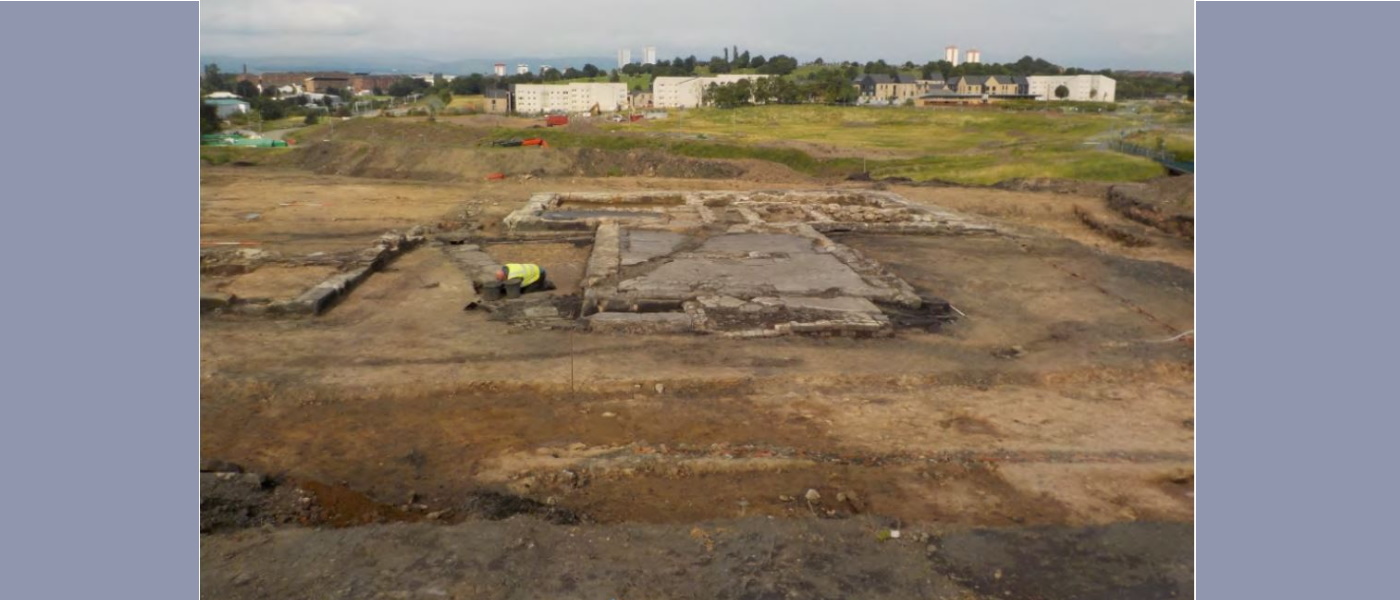Rediscovering Broomhill (2016)

Before Sighthill there was Fountainwell, and Broomhill. The former survived in the names used in the Sighthill estate for buildings and roads. The latter remained buried until re-development offered the opportunity of archaeological resurrection. Located in what was latterly Sighthill Park, the highest part of the area between the M8, Pinkston Road and the railway line was once the site of Broomhill House and Steading. Buildings are shown here on historic maps from the mid-18th century onwards, and in 2016 an archaeological excavation was carried out during redevelopment and construction work (Paton 2016). The excavation found that the original steading would have been a structure with a living area at one end, and a byre for animals at the other – a typical post-medieval farmstead building, which was later rebuilt. Broomhill House was built after 1842, when the estate sold some of their land for an expanding railway depot. This sale may have generated the funds used to build Broomhill House and expand the farm in the later 19th century. Despite later demolition and landscaping, the foundations and floors of the house survived, and archaeologists were able to establish that it was a sandstone mansion with thirteen rooms. Slate flagstones and expensive tiles used in the house suggest that a considerable amount of money had been spent on the house and farm at this time. The house had been demolished by 1975. In this image, taken during the excavation, we look from the south at the remains of Broomhill House. Demolition and development have a long history here.

